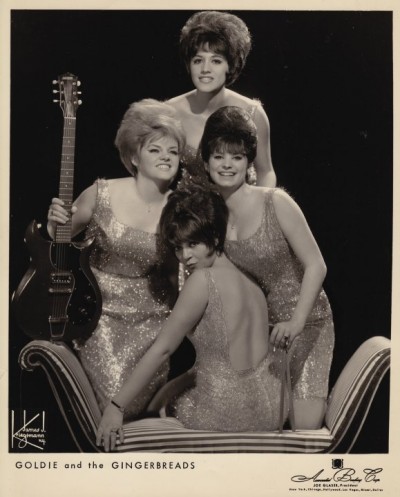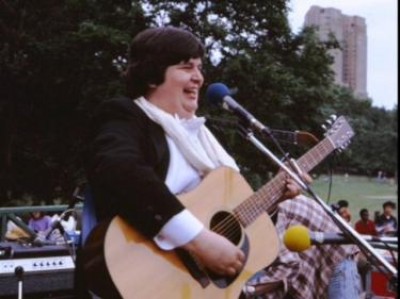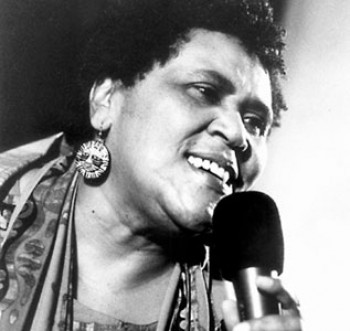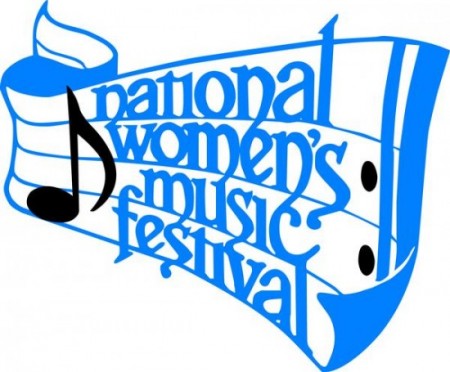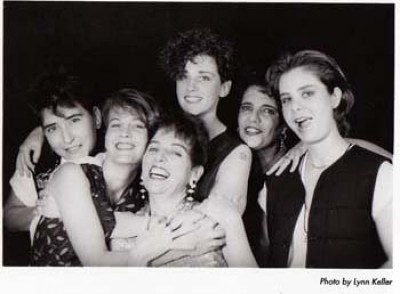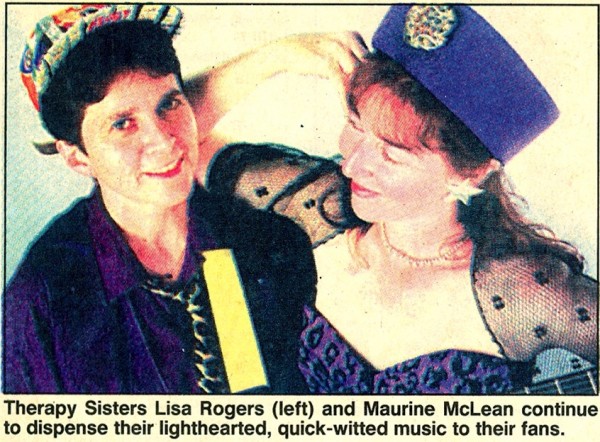Women’s music encompasses various genres created, produced, and distributed by women through independent labels and festivals. Although some musicians are Straight or Bisexual, Lesbians have led the movement since its inception in the late 1960s. Lyrics in women’s music affirm marginalized identities and advance political issues such as feminism and LGBTQ rights, and a significant share of songs in the repertoire constitute Lesbian folk music.
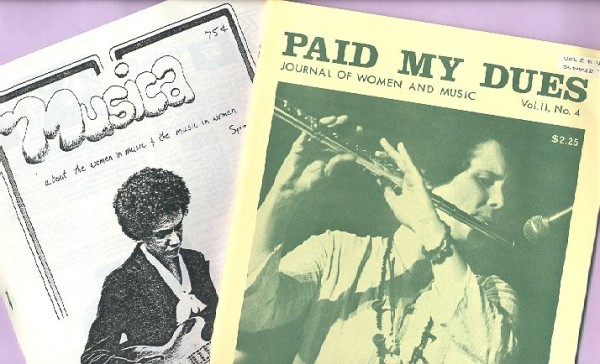
Two women’s music magazines. Musica features Jerene Jackson, and Paid Our Dues has Kay Gardner (queermusicheritage.us/women1.html, January 2013)
Starting a Revolution
The women’s music movement developed out of the late 1960s political climate of social protest. Many women who participated in countercultural groups, the civil rights movement, and Gay liberation movements were denied equal involvement, so they aligned themselves with the feminist movement. However, the movement’s primary institution, the National Organization for Women, denied Lesbians a voice in the movement until 1971. Such exclusion motivated the formation of Lesbian separatist communities, including women-only collectives, ingatherings, and businesses. Music became a primary source of communication and affirmation, and women’s frustration with sexism in various music scenes motivated them to create their own scene. Rock music and other popular musics consisted of masculine display and offered few production or performance opportunities for women, who were primarily present as objects of pleasure for men.
In the late 1960s, some women formed bands and set the stage for the women’s music movement. Goldie and the Gingerbreads was the first all-woman band on a major label (Atlantic), and Fanny was the first all-woman band to record an entire album with a major label (Warner Brothers). The Chicago Women’s Liberation Band, performing in the early 1970s, presented a feminist challenge to sexist rock bands by parodying male rock acts that degraded women in their songs and performances.
The Women and Their Music
Maxine Feldman, who began performing in the mid-1960s, is recognized as one of the first women’s music artists. Her 1972 song, “Angry Atthis,” was created and produced by Lesbians, and the lyrics openly discuss Lesbian oppression.
One year later, Alix Dobkin formed Lavender Jane with bass player Patches Attom and flautist Kay Gardner. With the help of sound engineer Marilyn Ries, the group recorded and released Lavender Jane Loves Women and sold a thousand copies through grassroots efforts. The “Big Four” — Meg Christian, Cris Williamson, Holly Near, and Margie Adam — emerged in the early 1970s. These singer-songwriters began performing independently of each other, and by the mid-1970s, the four women toured together. Other foundational Women’s music musicians are Ferron, Tret Fure, Casse Culver, Therese Edell, Rhiannon, Deidre McCalla, and Teresa Trull.
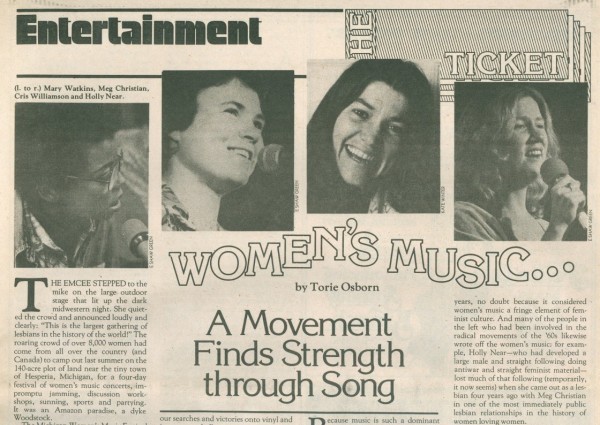
Article in Advocate with images of Mary Watkins, Meg Christian, Cris Williamson, and Holly Near, August 21, 1980 (queermusicheritage.us/wmf1.html, January 2013)
The sounds of the 1960s folk revival and protest movements greatly influenced women’s music. While many composed simple chords and melodies easy for audience members to sing, others incorporated harmonic twists and varied melodic phrases that expanded the palette of folk music gestures. Songs ranged from up-tempo humorous chants to down-tempo laments. Many utilized verse-chorus form, a popular formula for folk protest songs. Lyrics articulated a range of topics including Lesbian relationships, sexism, homophobia, peace, nature, and spirituality.
Initially, women’s music musicians were primarily of European descent – few if any women of color were performing under the women’s music heading. In the late 1970s, the Varied Voices of Black Women tour featured women-identified musicians Gwen Avery, Mary Watkins, and Linda Tillery along with poet Pat Parker. These women had already performed in civil rights arenas with women-centered messages. Watkins, Avery, and Tillery introduced gospel, blues, and soul with an African-American Lesbian perspective to the women’s music scene.
Produced by Women
Women’s recording labels and music festivals opened up opportunities for women in the music business. These enterprises subsisted on grassroots endeavors inspired by a do-it-yourself (DIY) ethic, the same ideology that spurred many protest and social activist movements in the 1960s. Olivia Records, founded by Cris Williamson and Ginny Berson in 1973, was the first official all-woman recording label. That same year, Holly Near created Redwood Records and re-ignited the career of The Weavers’ singer Ronnie Gilbert. Barbara Price and Margie Adam formed Pleiades in 1976, and later expanded their company to raise money for women in politics. In 1976, Ladyslipper was created to catalogue women’s music and raise awareness, and presently publishes the Catalogue and Research Guide of Music by Women. Goldenrod originally distributed albums for Olivia Records in 1975, and has acted as a major distributor of women’s music.
Women’s music festivals (WMFs) are important venues for live women’s music. Established in 1974, the National Women’s Music Festival was the first WMF. The Michigan Womyn’s Music Festival was created in 1976 and is reputedly the largest women-only space for Lesbian folklife and music. Since the 1970s, WMFs have taken place across the United States every year, and have expanded to international proportions with Ladyfest, a WMF that launched in 2000 to promote riot grrrl (underground feminist punk) music.
Interface with Non-Lesbians and the Mainstream
Initially, women’s music was used interchangeably with Lesbian music. However, Straight and Bisexual women have also contributed to the movement. Many Straight women of color sang about women’s issues prior to the 1970s. Although not Lesbian-identified, they provided equally significant perspectives. Sweet Honey in the Rock, for example, influenced women’s music from the late 1970s onwards. In addition, many Bisexual-identified women have contributed to the women’s music oeuvre, including Meshell Ndegeocello (there are variations in the spelling of “Ndegeocello”) and Ani DiFranco. Nevertheless, some members of the community criticized Holly Near, who began dating men after self-identifying as Lesbian. Despite occasional controversy, most Lesbians welcome non-Lesbian musicians.
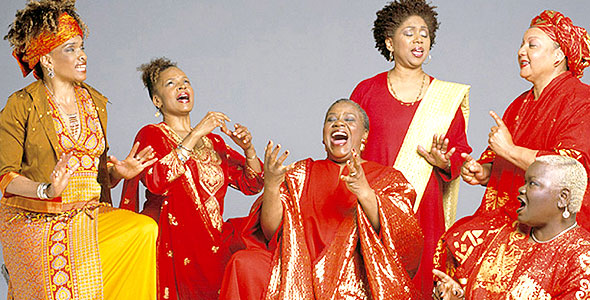
Sweet Honey in the Rock (pbs.org/wnet/americanmasters/episodes/sweet-honey-in-the-rock /filmmaker-interview-stanley-nelson/718, January 2013)
Although women’s music depends on DIY traditions and women-only separatist structures, mainstream female artists Indigo Girls, Melissa Etheridge, and k.d. lang have been role models within the women’s music community. Companies like Ladyslipper and Goldenrod have expanded their musical offerings beyond women’s music to include Gay male and Straight women artists. Ani DiFranco originally started her label, Righteous Babe Records, to produce her own music and has since expanded it to incorporate various genres performed by both men and women.
Continuing the Legacy
Since the movement’s inception, many musicians have contributed to the genre with new and diverse styles. In the 1980s and 1990s Casselberry-DuPree (varying spellings for “DuPree”), a vocal duo supported by a rhythm section and vocal ensemble, created an amalgam of contemporary folk, reggae, and gospel-inflected music with lyrics that addressed peace and socially progressive politics. Ubaka Hill featured African drumming combined with unique vocal chants and instrumentation from other traditions, with lyrics focusing on female solidarity and spirituality. More recent groups have chosen an aggressive approach in their music and lyrics. The music of the Butchies came out of the early 1990s riot grrrl tradition with influences from hard punk to pop rock. The duo Bitch and Animal developed a humorous and direct style of confronting topics such as drag kings, sex, marijuana, and the complexities of being feminist and Lesbian.
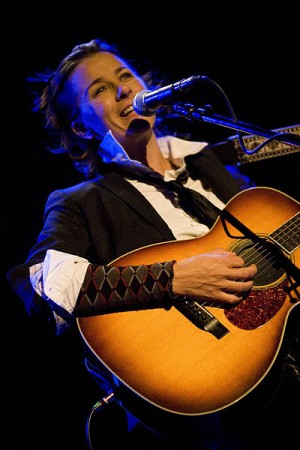
“Melissa Ferrick @ the Bowery Ballroom, New York, NY, 9/10/08” (en.wikipedia.org/wiki/File:Melissaferrick.jpg, January 2013)
Musicians such as Melissa Ferrick and Heather Bishop continued in the urban folk tradition that formed the foundation of the women’s music movement, but with innovative elements. Bass player and singer Ferrick creates a dense sound with heavy bass and the acoustic guitar’s lower range, using spoken-word delivery that lends her music an intimate character, especially when singing about erotic or emotional topics.
In the 1980s, Girls in the Nose blended women’s music with elements of activism and humor. The band formed in Austin, Texas during the summer of 1985 and featured Gretchen Phillips (vocals, guitar), folklorist Kay Turner (vocals), Darcee Douglas (bass), Pam Barger (drums), and Joanna Labow (percussion, keyboards, vocals). They released three albums — Chant to the Full Moon, Oh Ye Sisters (1988), Girls in the Nose (1990), and Origin of the World (1992) — and toured nationally with that songs injected levity into taboo topics. “Sodomy” addresses Lesbian sex and sodomy laws during the Bush-Reagan era. “Breast Exam” seamlessly merges sexual desire and breast cancer prevention:
Your lover’s lying there next to ya
She’s hot
I think she wants to do ya
Let her touch your tit
Go on, teach her how to do it
You got a breast exam
Since the band broke up, Gretchen Phillips has continued to follow a musical path going back to the early 1980s with her first band, Meat Joy. In the early 1990s, Phillips teamed up with Laurie Freelove and Kathy Korniloff to form Two Nice Girls and gained notoriety in the mid-1980s with “I Spent My Last $10 (On Birth Control and Beer),” a critique of heteronormal relationships. Since then, Phillips created a solo act, The Gretchen Phillips Xperience, and a duo, Phillips and Driver, with Gay male musician Dave Driver.
In addition to Girls in the Nose and various Phillips bands, another group out of Austin that blended activism and humor is the Therapy Sisters (Maurine McLean and Lisa Rogers), who released songs such as “Cure for the Common Osama,” “Let’s Put a Rich White Guy in the White House,” “Mad Cowboy Disease,” “Aren’t You Curious, George,” and “George Don’t Know Jack About Jesus” (songs indirectly and directly lampooning George W. Bush, forty-third President of the United States).
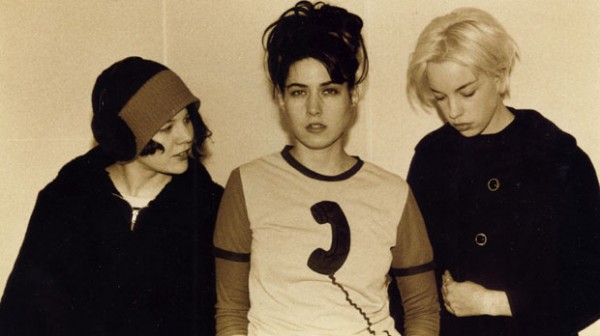
“L-R: Tobi Vail, Kathleen Hanna, and Kathi Wilcox of Bikini Kill” (verbicidemagazine.com/2012/11/15/tobi-vail-bikini-kill-interview, January 2013)
Other notable performers since the inception of the women’s music movement include Jamie Anderson, Bikini Kill, Bratmobile, Gina Breedlove, Ember Swift, Mimi Fox, God-des and She, Monica Grant, Nedra Johnson, Mélange Lavonne, Lesbians on Ecstasy, Zoë Lewis, Leslie and the LY’s, Lez Zeppelin, Pamela Means, Faith Nolan, Northern State, Vicki Randle, Toshi Reagon, Tegan and Sara, Le Tigre, Topp Twins, Lucie Blue Tremblay, Tribe 8, and Reina Williams.
– Stephanie Doktor
QEGF Authors and Articles
QEGF Introduction
Comments? Post them on our Encyclopedia facebook page.
Further Reading:
Carson, Mina, Tisa Lewis, and Susan M. Shaw. Girls rock!: Fifty Years of Women
Making Music. Lexington: University of Kentucky, 2004.
Hayes, Eileen, M. Songs in Black and Lavender: Race, Sexual Politics, and Women’s Music. Urbana: University of Illinois, 2010.
Higgins, Lisa L. “Reconstructing Gender, Personal Narrative, and Performance at the
Michigan Womyn’s Music Festival.” Ph.D. diss., University of Missouri-Columbia, 2008.
Lont, Cynthia M. “Women’s Music: No Longer a Small Private Party.” In Rockin’ the
Boat: Mass Music and Mass Movements, edited by Reebee Garofalo, Boston: South End, 1992.
Petersen, Karen E. “An Investigation into Women-Identified Music in the United
States.” In Women and music in Cross-Cultural Perspective, edited by Ellen Koskoff.
Champaign: University of Illinois, 1989 [1987].

